
The Schrödinger equation for harmonic oscillator is [15]

Here, ψ represent the wave function , E is the energy of the system ,h is the Plank's constant and k is the force constant.
It is convenient to simplify Eq. (2) by introducing the dimensionless quantities. Let us introduce a dimensionless variable:

where α is constant having dimensions of inverse of length. Thus Eq.(2), takes the form,

Where,

Here  is the reduced Plank's constant and ω0 is the frequency of the harmonic oscillator which is determined by the force constant and is given by,
is the reduced Plank's constant and ω0 is the frequency of the harmonic oscillator which is determined by the force constant and is given by,

The energy Eigen values (symbolized by )  and the normalized wave function (symbolized by
and the normalized wave function (symbolized by ) for the harmonic oscillator are given as,
) for the harmonic oscillator are given as,


Where  are Hermite polynomials of order v, and v represents the vibrational quantum number.
are Hermite polynomials of order v, and v represents the vibrational quantum number.
The harmonic oscillator model for the vibrational motion shows discrepancies for the real diatomic molecules because the real potential of diatomic molecule deviate more and more from the parabolic potential with the larger deviation of intermolecular distance 'r', from equilibrium intermolecular distance 're'. So a more e practical model for vibrating molecule is Morse potential. The Morse potential is defined below

Where ED is dissociation energy of the rigid molecule and β is the Morse parameter controlling the width of the potential well.
The energy levels in this case (symbolized by are given by,
are given by,

With : c=2.99792458X108
h=6.6260755X10-34
Here, is the harmonic wave number of vibration and
is the harmonic wave number of vibration and  is the anharmonic constant. These can be determined from the observation of two or more vibrational energy transitions.
is the anharmonic constant. These can be determined from the observation of two or more vibrational energy transitions.

The wave functions in this case (symbolized by ψ(v,x) are given by,

Where

Here
C is a constant
L(α,ʋ,x) are the associated Laguerre polynomials and NU is a vector of normalization constants.
The eigen functions of the Morse potential are given in terms of the variable 'x' defined below

2.2 Time Evolution of the Quantum Wave Packet
The time-dependent wave function for the quantum wave packet formed as a superposition of vibrational states is given as [1],

Here the coefficients  are the weighting factors in the superposition, which are given in terms of the initial wave function as
are the weighting factors in the superposition, which are given in terms of the initial wave function as

The weighting probabilities are modeled as a Gaussian distribution,

This model is preferred as it provides a symmetrical distribution in v with mean
With the assumption that the weighting probabilities are peaked around a mean value, it is reasonable to suppose that the states with energy near the mean value, contribute for the formation of wave packet. This allows expanding the energy in a Taylor series in v around the central value 

where each prime denotes a derivative.
The derivative terms in Eq.(16), define the time scales as given below [5]:

The first time scale is the classical time period for the shortest closed orbit. It controls the initial behavior of the wave packet. The second time scale is called the revival time. It governs the appearance of the fractional revivals and the full revivals. The third time scale is the super revival time. It is a larger time scale as compared to classical and revival time. In terms of these time scales, the Eq. (16) can be expressed as,

The expansion (18) shows that the time evolution of wave function is governed by these three time scales, which in turn are controlled by quantum number v. For small values of t, the first term in Eq. (19) dominates. Thus during this interval motion of wave packet is approximately periodic in time with period  . As t increases, the second term in phase modulates this behavior, causing the wave packet to spread and collapse. However, at time equal to revival time ,the second term in phase equals 2πi and once again the motion is governed by the first term. As a result, the wave packet regains its initial shape. This is called a full revival. Similarly at the super revival time, again the contribution of the third term is 2πi , the wave form reforms into a single wave packet that resembles the initial one better than the full revival at revival time. This new structure is called a super revival.
. As t increases, the second term in phase modulates this behavior, causing the wave packet to spread and collapse. However, at time equal to revival time ,the second term in phase equals 2πi and once again the motion is governed by the first term. As a result, the wave packet regains its initial shape. This is called a full revival. Similarly at the super revival time, again the contribution of the third term is 2πi , the wave form reforms into a single wave packet that resembles the initial one better than the full revival at revival time. This new structure is called a super revival.
3. The Probability Density Function and the Autocorrelation Function
The probability density function is used to plot the shapes of the wave packet at various times. This function is defined as follows

Similarly, the absolute square of autocorrelation function is defined as [11],

It gives a measure of the overlap between the wave packet at time t=0 and at later time t.
Substituting equation (13) in equation (20) ,|A(t)|2 yields,

Using equation (15) for Cn coefficients, plots of |A(t)|2 are obtained to observe the revivals and collapses of GWP constructed from the vibrational energy levels of CO.
4. Results and Discussions
A weighting factor with central value of 15 and CO as an example of diatomic molecule has been taken. Now for the molecule CO, the vibrational constants, the classical time period and the revival time period are,

The figures 1 through 4 are the plots of the probability density function at various instants of time. Figure 1 is the plot of the probability density function at time t=0. The wave packet is at the r.h.s. of the equilibrium inter-atomic distance 're'. Figure 2 is the plot of the probability density function at time  . Clearly the wave packet is moving towards the l.h.s. of the potential. Figure 3 is the plot of the probability density function at time
. Clearly the wave packet is moving towards the l.h.s. of the potential. Figure 3 is the plot of the probability density function at time  . Here the oscillatory behavior of the wave packet is seen. This is due to momentum gain by the wave packet as a consequence of contact with high potential wall at the left most end of the Morse potential. Figure 4 is the plot of the probability density function at time,
. Here the oscillatory behavior of the wave packet is seen. This is due to momentum gain by the wave packet as a consequence of contact with high potential wall at the left most end of the Morse potential. Figure 4 is the plot of the probability density function at time,

Figure (5) shows the plot of absolute square of the autocorrelation function versus reduced classical time (the ratio of the classical time period and the classical time for the primitive path). It is clear that the wave packet spreads more and more after every classical time period as the peaks of autocorrelation functions are decreasing. Ultimately the wave packet will collapse. But at the revival time period, the wave packet revives to its original state. This fact is made lucid from the plot of absolute square of the autocorrelation function versus reduced revival time (the ratio of the revival time period and the revival time for the primitive path), Figure (6). It is seen that full revivals occur at times t=k*Trev /2, when all vibrational Eigen States have accumulated a phase of 2*π*k with k = 1, 2, 3,. This result is supported by the findings of [14]. The smaller peaks show the existence of fractional revivals.
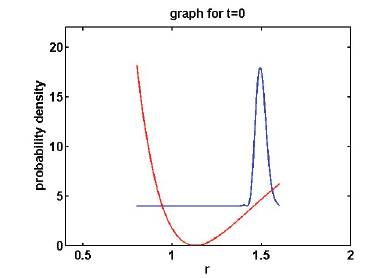
Figure 1. Probability Density plot at time t=0
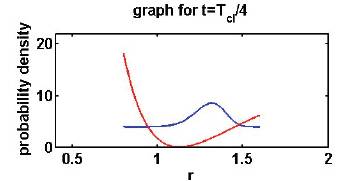
Figure 2. Probability Density plot at time t= Tcl/ 4
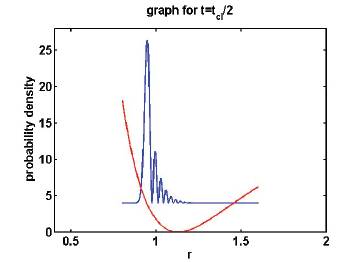
Figure 3. Probability Density plot at time t= Tcl/ 2
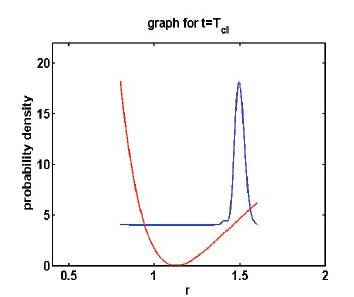
Figure 4. Probability Density plot at time t= Tcl
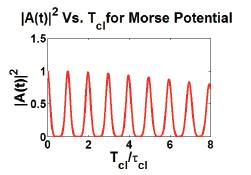
Figure 5. Autocorrelation function vs. reduced classical time
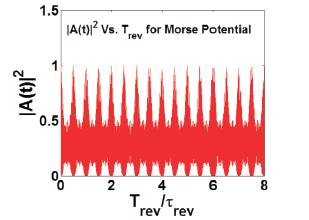
Figure 6. Autocorrelation function vs. reduced revival time
Conclusion
The revival structure of quantum wave packet constructed by superimposing the vibrational states of the CO molecule has been analyzed. From the energy spectrum, it is possible to predict the motion and type of revivals that the wave packet undergoes. It is shown that motion is simple to and fro motion and the quantum wave packet constructed by superimposing the vibrational states of the CO molecule shows the exact revival pattern along with the fractional revivals.
Acknowledgement
The work is accomplished with the help of resources of department of Physics, DAV college, Amristar.